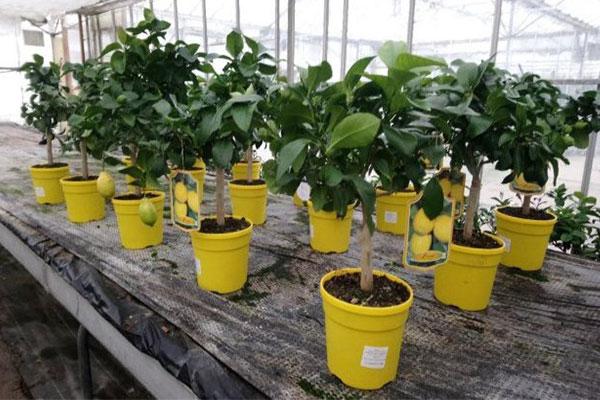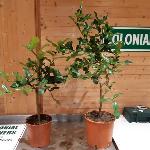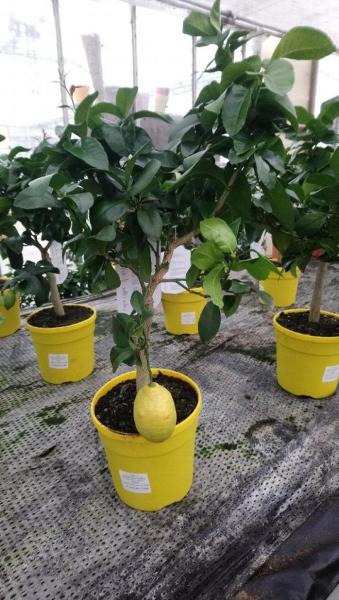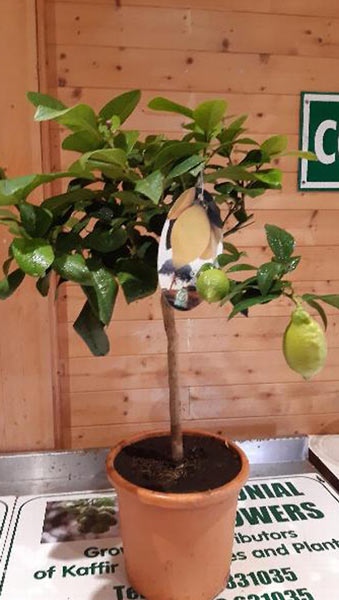Lemon Plants for Sale
Colonial Growers are pleased to introduce a Four Seasons Lemon plant which is a commercial fruiting variety of lemon plant with good flavoured fruit.
The plant is an evergreen, is fragrant and flowers at intervals. The plant should be kept in a good light, always above 4oC and should be fed weekly during the summer but less often in cool temperatures. Ideal for a cool conservatory

 Lemon Plants For Sale
Lemon Plants For SaleIN STOCK
We can send Lemon plants as gifts to others on your behalf and can include free of charge a card with your personalised message and no prices will appear on our paperwork. Just send us your details using our Contact Us page once you have ordered.
When there is no danger of frost, Citrus trees like to be outside in the summer months. However they must be acclimatised gradually to the new light level, by being moved first to a slightly shaded area outside for 2-3 weeks before being put in their sheltered, sunny spot for the summer.
Equally when being brought indoors in winter, they should be kept in the shade for 2-3 weeks before coming inside. This reduces any stress to the leaves that the sudden light change could cause.


Delivery
Plants sent by courier £10.75 delivered next working day if ordered by noon.
Next day courier charge covers: ENGLAND, WALES, SCOTTISH LOWLANDS AND NORTHERN IRELAND ONLY.
Please call for rates before placing your order if you live in: ISLE of MAN, SCOTTISH HIGHLANDS AND ISLANDS, ISLE OF WIGHT or the CHANNEL ISLANDS.
**PLEASE NOTE WE NO LONGER SHIP PLANTS OUTSIDE THE UK
Placing an order with Colonial Growers:
Once you have finalised your order we will do our utmost to ensure your product arrives promptly and in top condition.
Step 1
Click 'Buy Now' to navigate to the relevant product
Step 2
Input the desired quantity then click ADD TO BASKET.
Step 3
Review your order, select the appropriate delivery option and then click 'CHECKOUT' to finalise your order.
We are happy to answer any questions, whether about the ordering process or about taking care of your new Colonial Growers' Lemon plant. We pride ourselves on our service both before and after sales. Click the following link for our other items, such as kaffir lime leaves, fruits or plants.
Get in touch
Did you find the information you are looking for? Otherwise, we will be happy to help you answer your questions. Call us at:
Or send us an e-mail from our contact page